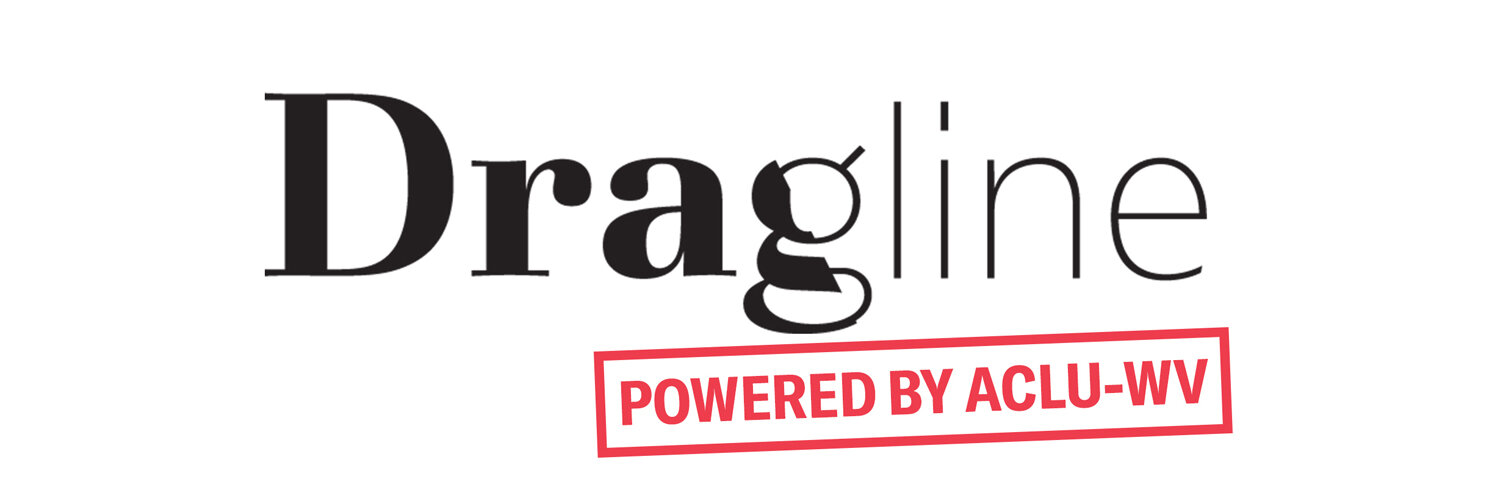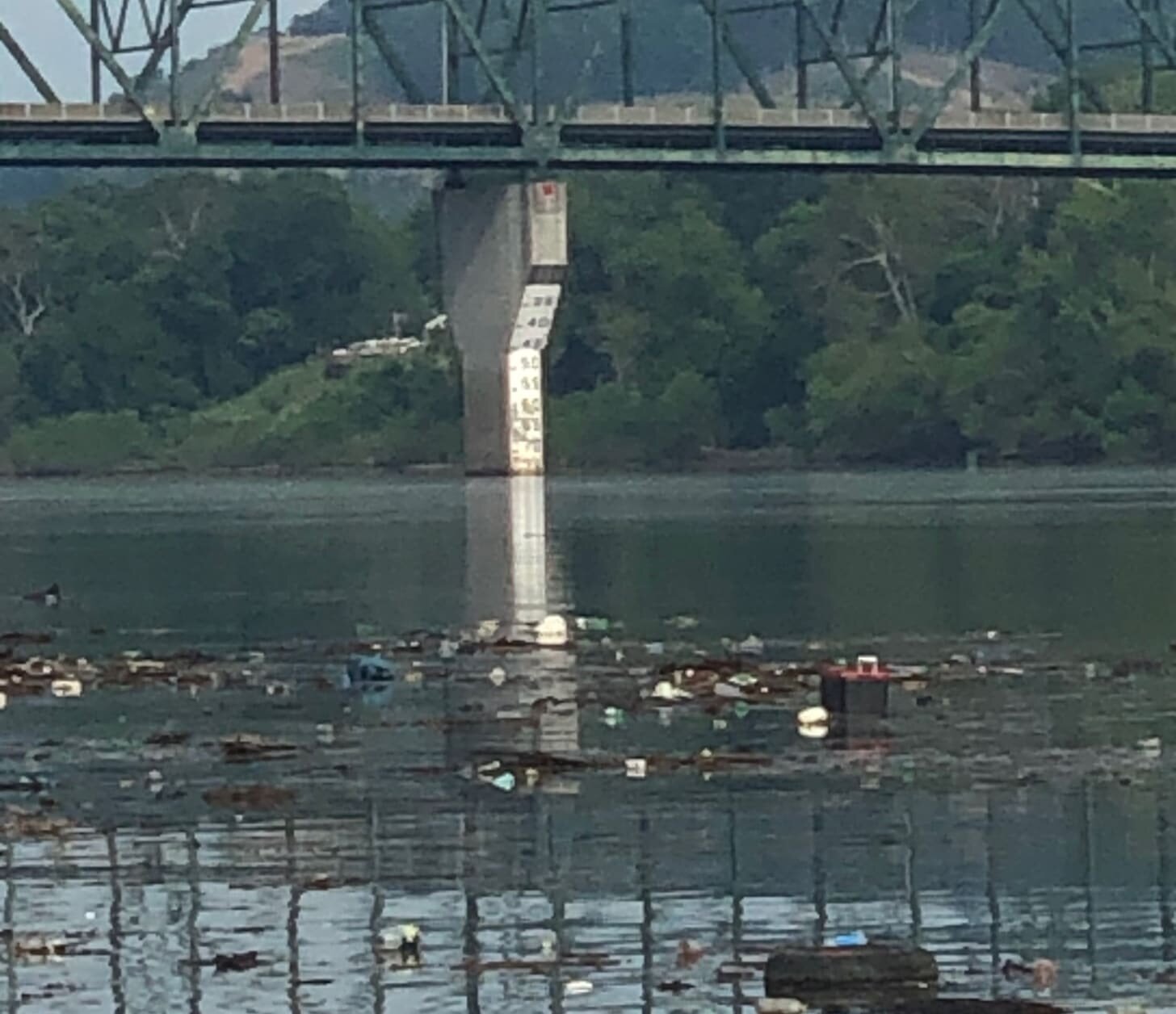Federal agency investigates City of Huntington over trash unlawfully moved into Ohio River
Dragline revealed that the City of Huntington unlawfully moved trash into the Ohio River.
Trash spotted floating downstream in Huntington, W.Va., Jun. 4, 2020 (Photo/Dragline)
Jul. 8, 2020 • Written by Kyle Vass; Edited by Lacey Johnson
HUNTINGTON, W.Va. (Dragline)—It’s not uncommon to see bits of rubbish floating in the Ohio River or washed up on its shores. But on June 4, a body of trash over 200 yards in length was spotted making its way downstream. The procession of garbage, visible from Huntington’s Harris Riverfront Park, was traced back to a crane being operated by Amherst Madison, a Charleston-based contractor hired by the City of Huntington to “sweep debris” from behind a city-owned dock into the river.
In this instance, the “debris” included tires, plastic buckets, styrofoam and all manner of trash that would normally be destined for a landfill. Rather than paying Amherst Madison to transport the garbage to a disposal facility, the city saved $16,000 by opting to send the trash downstream instead, according to a copy of the contract obtained via the West Virginia Freedom of Information Act.
Excerpt of the contract between the City of Huntington and Amherst Madison, obtained by Dragline.
A review of documents by Dragline revealed that the city failed to adhere to conditions set forth by the United States Army Corps of Engineers (USACE) when moving the trash. Susan Porter, a transportation branch chief for USACE, said any and all work done in the river must be ouatlined in a “letter of permission” issued by USACE. Failure to operate within the conditions set forth by a USACE letter of permission is a violation of the Rivers and Harbors Act.
Huntington district USACE office is located in the Sidney L. Christie Federal Building in Huntington, W.Va., Apr. 12, 2016 (Photo/Riddick Fielder Stern)
Porter noted that the City of Huntington was, in fact, granted a letter of permission last summer. But, the letter only authorized a “one step operation,” meaning the permission was granted for a single use. Moreover, the 2019 USACE letter stated specific conditions that any and all garbage debris must be removed from the river and placed in a landfill, not put back into the river.
Excerpt of USACE letter of permission conditions given to the City of Huntington in 2019.
Dragline’s investigation led to USACE opening an investigation into the incident, and Porter says she has been in communication with city officials to ensure further in-river work is in accordance with permit requirements
Legality aside, sweeping trash back into the river is harmful to aquatic life, both in the Huntington area and downstream, says Alex Cole of the Ohio Valley Environmental Coalition (OVEC).
Alex Cole is a community organizer for OVEC in Huntington, W.Va., Jun. 26, 2019. (Photo/OVEC)
“A lot of it ends up broken down and in the bodies of fish, mussels, turtles and any other critters in the ecosystem,” said Cole. “And then, of course, the stuff that makes it all the way down the Mississippi ends up in the ocean or the bayou ecosystems.”
As for how the trash ends up in the river to begin with, Cole says much of it flows from tributaries like the Guyandotte River and the Robert C. Byrd Locks and Dam in Apple Grove, WV. If USACE could remove the waste from the tributaries and dams instead of releasing it downstream, the Ohio River would have a lot less garbage in it, he added.
Having heaps of trash floating downriver reinforces the public’s view of the river as “our own personal sewage system,” said Cole.
“People see the trash and automatically have a lower respect for the waterway. They make fun of it being so toxic ... and it becomes a vicious cycle; It’s already polluted, what’s a little more trash?”
This is an ongoing story and will be updated as the USACE investigation continues.






